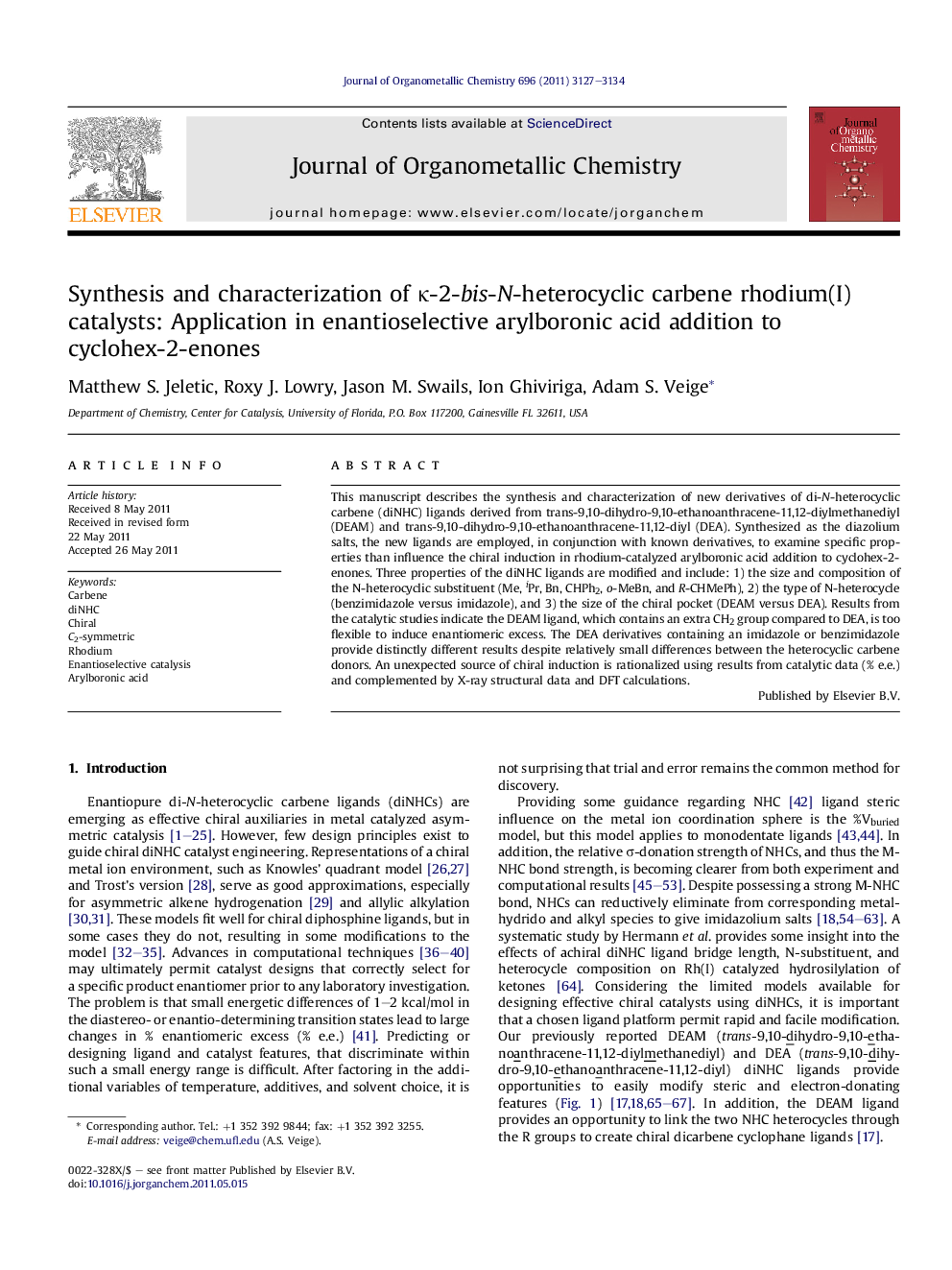| Article ID | Journal | Published Year | Pages | File Type |
|---|---|---|---|---|
| 1325197 | Journal of Organometallic Chemistry | 2011 | 8 Pages |
This manuscript describes the synthesis and characterization of new derivatives of di-N-heterocyclic carbene (diNHC) ligands derived from trans-9,10-dihydro-9,10-ethanoanthracene-11,12-diylmethanediyl (DEAM) and trans-9,10-dihydro-9,10-ethanoanthracene-11,12-diyl (DEA). Synthesized as the diazolium salts, the new ligands are employed, in conjunction with known derivatives, to examine specific properties than influence the chiral induction in rhodium-catalyzed arylboronic acid addition to cyclohex-2-enones. Three properties of the diNHC ligands are modified and include: 1) the size and composition of the N-heterocyclic substituent (Me, iPr, Bn, CHPh2, o-MeBn, and R-CHMePh), 2) the type of N-heterocycle (benzimidazole versus imidazole), and 3) the size of the chiral pocket (DEAM versus DEA). Results from the catalytic studies indicate the DEAM ligand, which contains an extra CH2 group compared to DEA, is too flexible to induce enantiomeric excess. The DEA derivatives containing an imidazole or benzimidazole provide distinctly different results despite relatively small differences between the heterocyclic carbene donors. An unexpected source of chiral induction is rationalized using results from catalytic data (% e.e.) and complemented by X-ray structural data and DFT calculations.
Graphical abstractExperimental and computational data reveals the arene ring of a benzimidazole versus an imidazole imparts an additional, albeit subtle, steric component to the chiral environment at the metal ion. More specifically, one of the protons on the benzimidazole ring sterically clashes with the arene ring of the ethanoanthracene backbone providing improved % e.e.Figure optionsDownload full-size imageDownload as PowerPoint slideHighlights► Synthesis and characterization of κ-2-bis-N-heterocyclic carbene rhodium(I) catalysts. ► Enantioselective arylboronic acid addition to cyclohex-2-enones. ► Synthesis and characterization of a free di-N-heterocyclic carbene. ► Ground state spin-restricted density functional theory geometry optimized computation of chiral rhodium catalysts.
